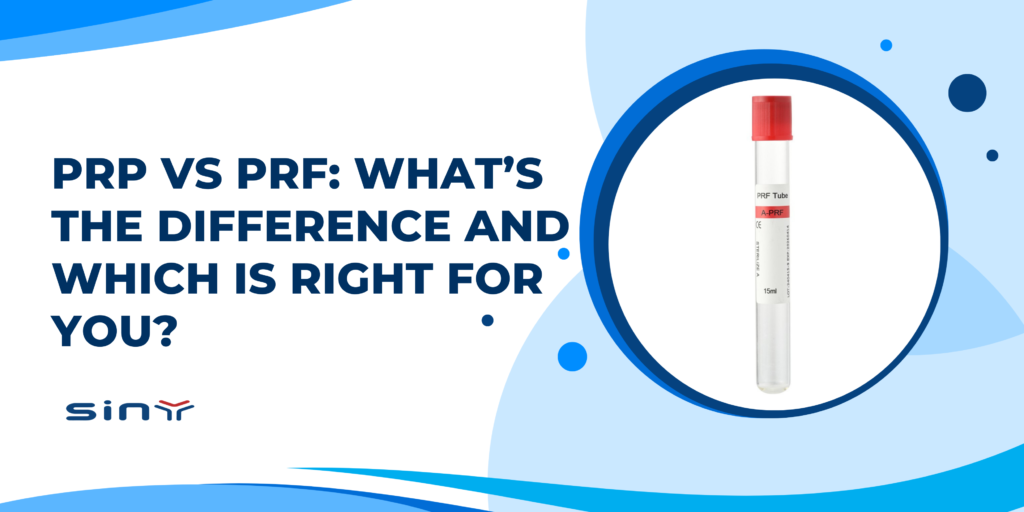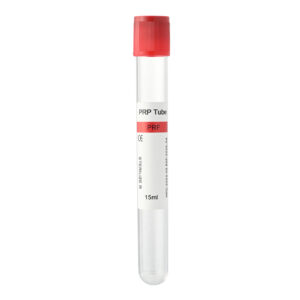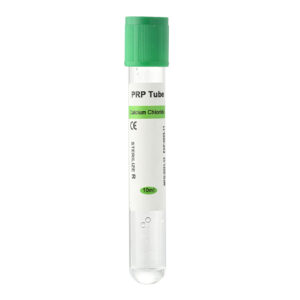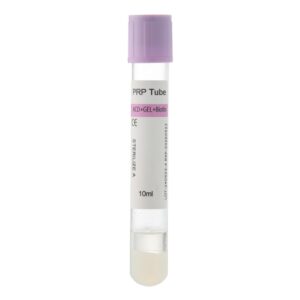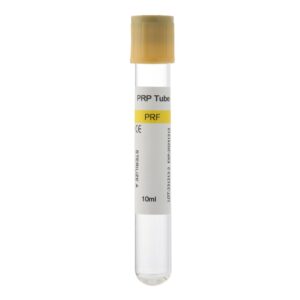PRP vs PRF: What’s the Difference and Which Is Right for You? As regenerative medicine continues to evolve, more clinicians rely on autologous blood-derived products like PRP (Platelet-Rich Plasma) and PRF (Platelet-Rich Fibrin) in various treatments. From skin rejuvenation and hair restoration to dental surgeries and soft tissue healing, doctors across specialties increasingly choose these techniques to support natural healing.
Although both products come from the same source—your blood—they differ significantly in preparation, function, and clinical use. Whether you’re a healthcare provider or a patient considering treatment, understanding these differences helps you make better, more informed choices.
What Is PRP?
PRP, or Platelet-Rich Plasma, refers to a concentration of platelets suspended in plasma. Healthcare providers draw your blood into a tube that contains an anticoagulant (like ACD) to prevent clotting. Then, they use centrifugation to separate red and white blood cells and concentrate platelets in the plasma layer.
Platelets do more than support blood clotting. They release growth factors like PDGF, TGF-β, and VEGF, which play essential roles in repairing and regenerating tissue. Since PRP remains in liquid form, doctors can inject it directly into the skin, joints, or soft tissue to promote healing.
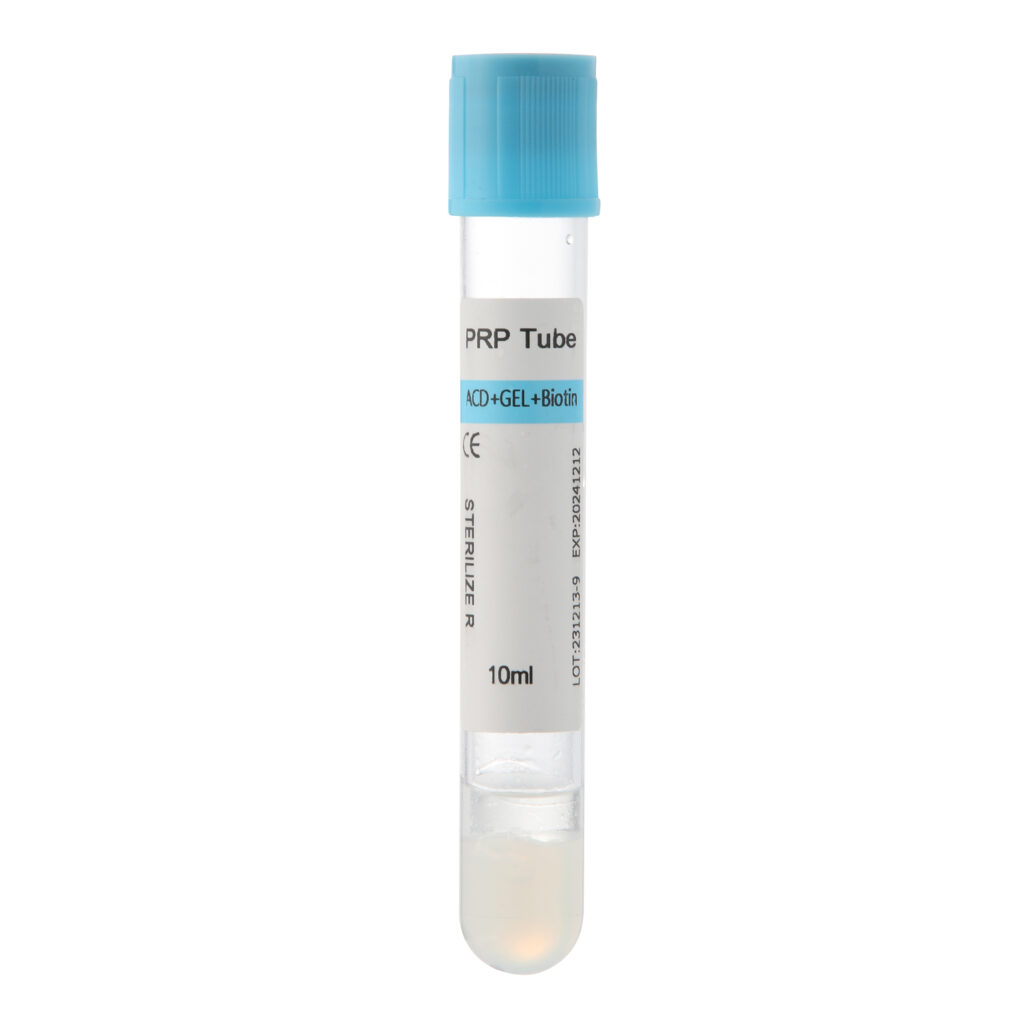
What Is PRF?
PRF, or Platelet-Rich Fibrin, represents another blood-derived therapy, but unlike PRP, it doesn’t involve anticoagulants. Once the provider collects your blood, they immediately place it in a centrifuge. During the spin, the blood begins to clot naturally. This process forms a fibrin matrix that traps platelets, white blood cells, and cytokines inside.
The resulting material forms a semi-solid, gel-like structure that slowly releases growth factors over several days. Because the process doesn’t involve additives or chemicals, PRF offers high biocompatibility and supports long-lasting tissue repair. Dentists, surgeons, and wound care specialists often prefer PRF in surgical procedures and implant-based therapy.
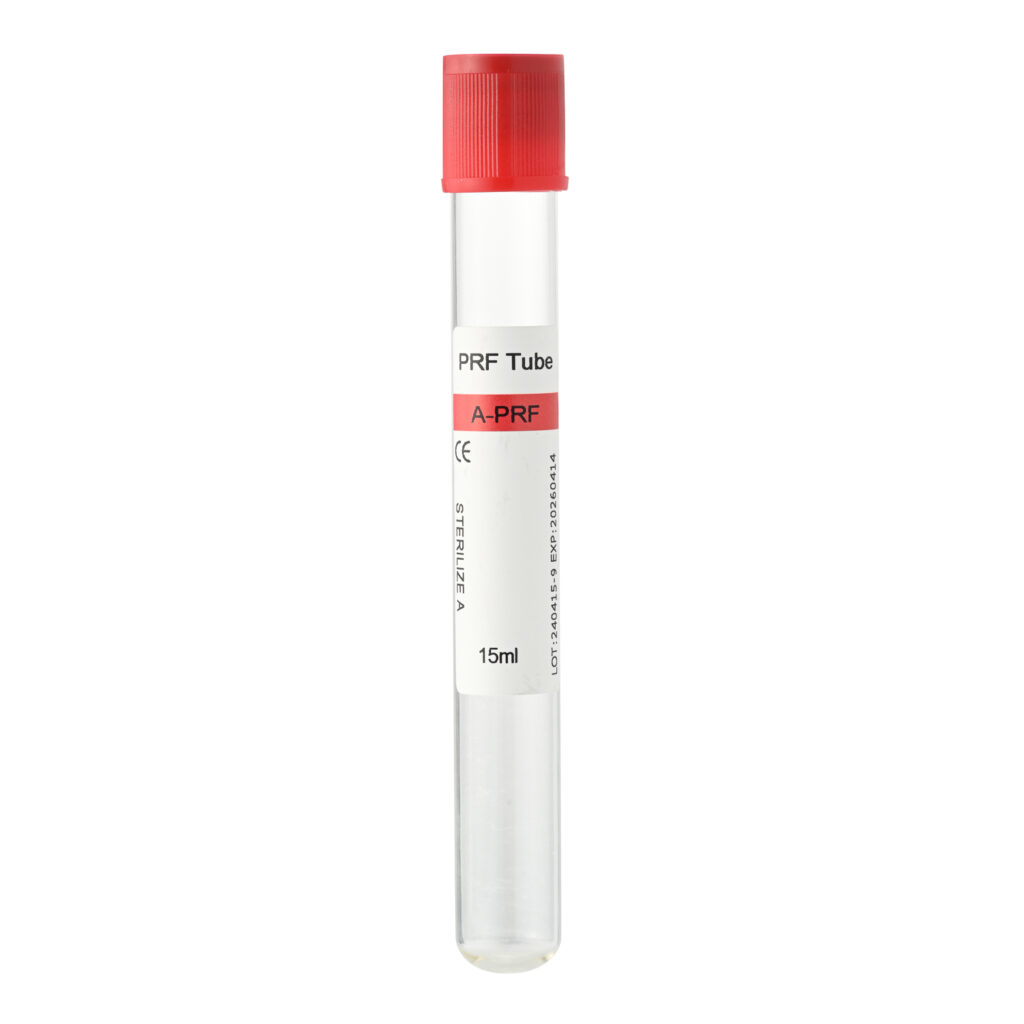
Key Differences Between PRP and PRF
Although both PRP and PRF come from whole blood, their preparation methods and clinical functions vary in key ways:
1. Additive Use
Doctors add anticoagulants to PRP tubes to prevent premature clotting during preparation.
In contrast, PRF requires no additives and relies on the body’s natural clotting process during centrifugation.
2. Physical Form
PRP stays in a liquid state, making it ideal for injection.
PRF solidifies into a gel-like structure, which doctors apply as a membrane or filler for surgical sites.
3. Growth Factor Release
PRP delivers growth factors rapidly after injection, ideal for short-term recovery.
PRF gradually releases bioactive factors over several days, extending the regenerative effect.
4. Timing Sensitivity
Clinicians can process PRP several minutes after collection.
In contrast, PRF requires immediate centrifugation—within 1 to 2 minutes—or the blood clots too early.
5. Clinical Focus
Providers typically use PRP in injection-based therapy, such as for hair restoration, joint pain, or aesthetic medicine.
They use PRF more often in surgical procedures that benefit from structural support, such as oral surgeries and wound coverage.
Common Clinical Applications of PRP and PRF
Each material suits specific medical goals. Let’s explore where doctors commonly use PRP and PRF:
- Dermatology & Aesthetic Medicine
- Doctors inject PRP to improve skin texture, reduce acne scars, and rejuvenate aging skin. Many combine PRP with microneedling for enhanced results.
- Hair Restoration
- Providers often inject PRP into the scalp to treat androgenetic alopecia. The concentrated growth factors reactivate dormant follicles and prolong hair growth.
- Orthopedics & Sports Medicine
- Physicians use PRP injections to treat tendon injuries, osteoarthritis, and ligament damage. These injections promote natural repair and reduce inflammation.
- Oral & Maxillofacial Surgery
- Surgeons place PRF membranes over surgical areas such as tooth extractions or implant sites. The fibrin matrix protects the wound and supports bone regeneration.
- Chronic Wound Management
- Wound care specialists apply PRF to non-healing wounds like diabetic ulcers and surgical incisions. PRF maintains moisture and releases healing agents over time.
- Combined Treatment
- In advanced care, providers sometimes inject PRP first to stimulate tissue activity, then apply PRF for sustained healing and structural support.
Which Is Right for You?
You and your doctor can choose PRP, PRF, or a combination based on your treatment needs and the nature of your condition.
PRP may be a better choice if you:
- Prefer non-surgical or outpatient procedures.
- Need quick results for cosmetic, orthopedic, or hair-related concerns.
- Want flexible, injection-based treatment.
PRF may be more suitable if you:
- Require tissue support after surgery
- Prefer additive-free, long-acting healing
- Need to cover or fill wounds with biological scaffolding
Some therapies use both materials to maximize the outcome. Your healthcare provider can guide you through the best option based on your goals and clinical situation.
FAQ: Frequently Asked Questions
Q1: Can I combine PRP and PRF?
Yes. Many physicians combine them to enhance healing—PRP jumpstarts repair, while PRF sustains the effect and protects the area.
Q2: Are these treatments safe?
Absolutely. Since both materials come from your blood, they pose minimal risk of allergic reactions or rejection.
Q3: Will the procedure hurt?
PRP injections may cause mild discomfort. Doctors often apply local anesthesia to reduce pain. PRF is typically applied during surgery, with little to no added sensation.
Q4: How soon can I expect results?
You may see results from PRP in 2 to 4 weeks. PRF effects appear more gradually but last longer due to the extended release of growth factors.
Summary
Both PRP and PRF serve as valuable tools in regenerative medicine. PRP delivers concentrated healing factors quickly, making it ideal for aesthetic procedures, hair therapy, and joint treatments. PRF, with its additive-free, fibrin-based structure, provides sustained release and structural support, especially for surgeries and wound care.
When you understand how they differ, you can choose the right option—or combination—for your unique health needs. Used correctly, both methods promote safe, effective, and natural healing.
If you want to learn more about PRP/PRF tubes, centrifuges, or collection systems, please visit our website: sinymedical, or contact our product specialists for more information.

